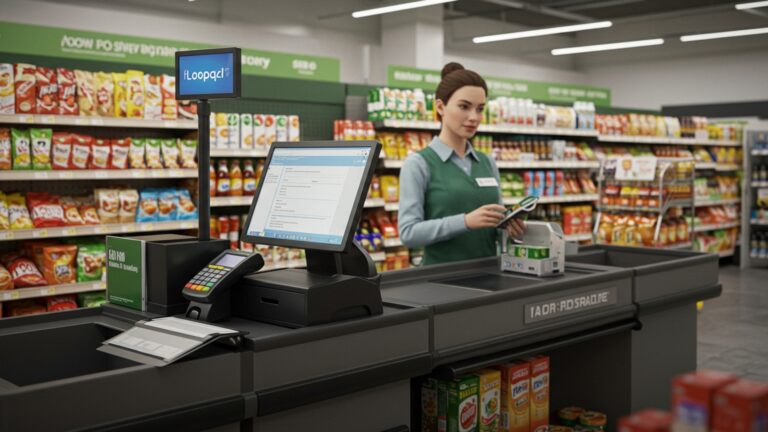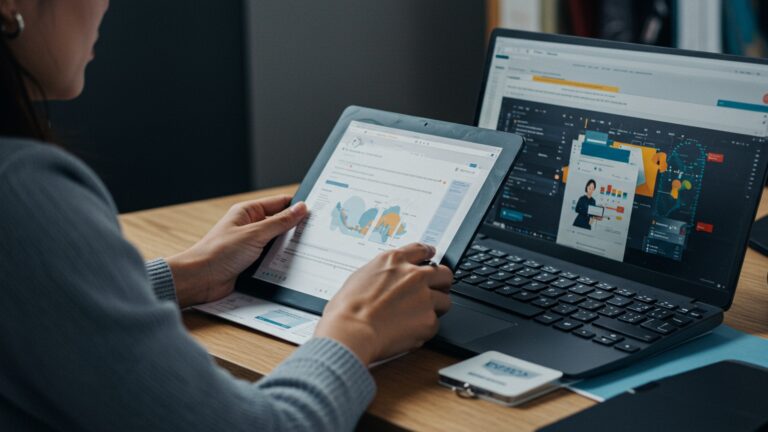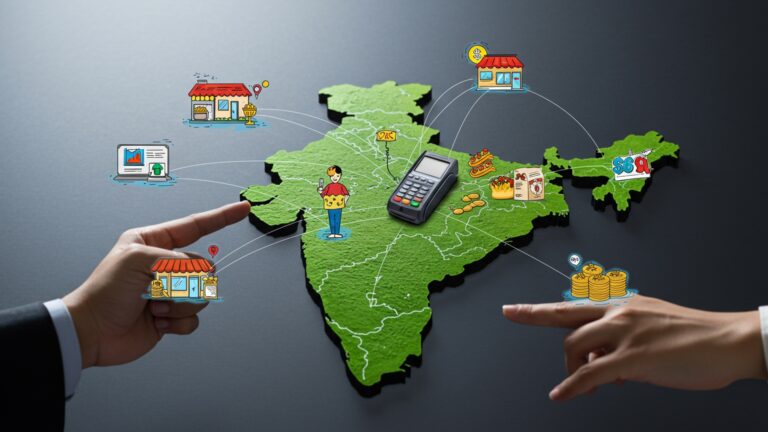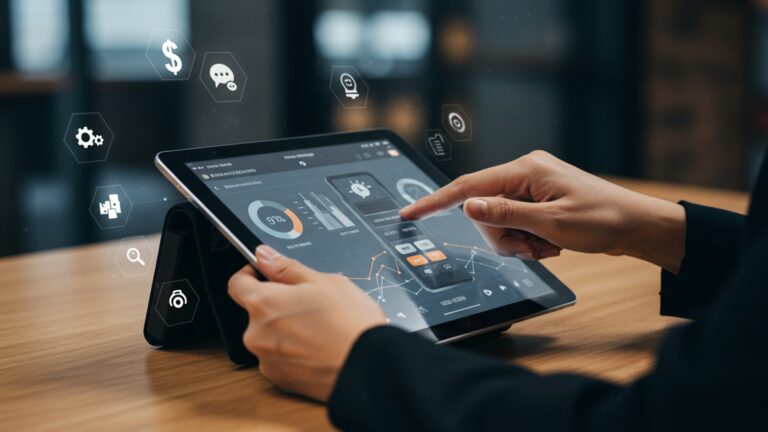How to Optimize Your Billing Process Using Modern POS Software Solutions
The hidden costs of outdated billing systems often cripple business efficiency, transforming customer checkout into a frustrating ordeal and data reconciliation into a manual nightmare. Modern pos billing software solutions, But, revolutionize this critical function, moving beyond simple transaction processing to become integrated platforms for strategic growth. Consider how today’s cloud-based systems instantly unify sales data from in-store and e-commerce channels, providing real-time inventory visibility and empowering retailers to offer seamless omnichannel experiences. This advanced capability not only slashes payment processing errors and accelerates cash flow but also unlocks powerful analytics for precise financial forecasting and enhanced operational agility across the enterprise.
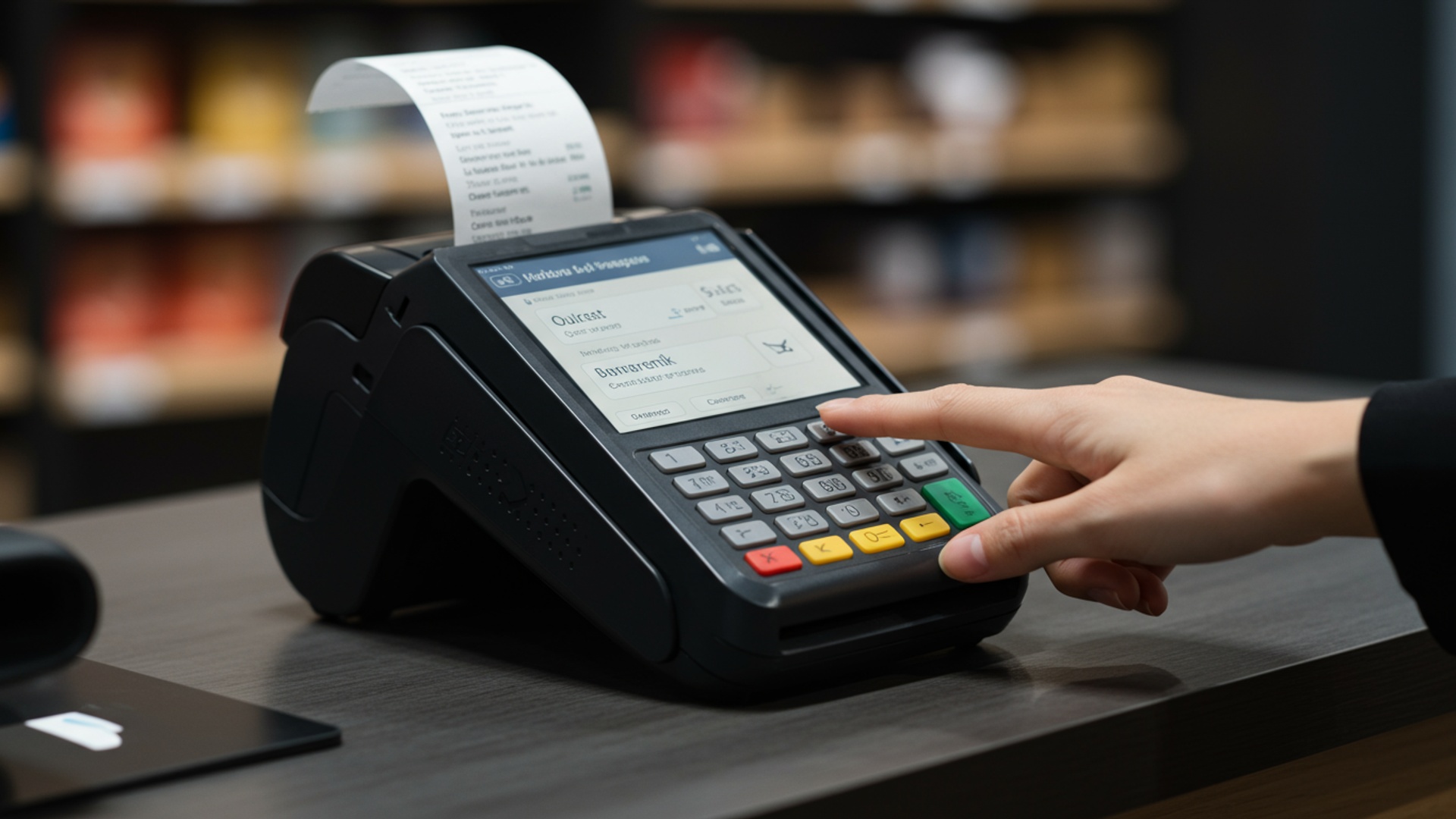
Understanding the Core Challenge: Traditional Billing Pain Points
For many businesses, the billing process can feel like a necessary evil – a bottleneck that slows down operations and introduces potential for error. Historically, manual systems, outdated cash registers. disparate software solutions have plagued retailers, restaurants. service providers alike. These traditional methods, while once standard, are now significant inhibitors of efficiency and customer satisfaction.
Consider the typical pain points:
- Manual Errors: Hand-keying prices, calculating discounts, or tallying totals often leads to human mistakes, resulting in incorrect charges, customer disputes. financial discrepancies.
- Slow Transaction Times: Lengthy checkout lines are a direct consequence of inefficient billing. Customers grow impatient, leading to lost sales and a tarnished brand reputation.
- Lack of Real-Time Data: Without integrated systems, businesses struggle to get an immediate overview of sales performance, inventory levels, or customer purchasing habits. This makes informed decision-making challenging.
- Inconsistent Pricing: Managing price changes, promotions. special offers across multiple channels or locations manually is a recipe for inconsistency, leading to customer frustration and potential revenue loss.
- Poor Customer Experience: Cumbersome return processes, inability to track loyalty points, or limited payment options detract significantly from the overall customer journey.
- Difficult Reconciliation: , reconciling cash, card payments. sales figures against inventory can be a time-consuming and error-prone task, often delaying financial reporting.
These challenges aren’t just minor inconveniences; they directly impact profitability, operational efficiency. customer loyalty. Recognizing these hurdles is the first step toward embracing modern solutions, particularly advanced pos billing software.
Introducing Modern POS Software Solutions
At its core, a Point of Sale (POS) system is where your customer makes a payment for products or services. But, modern POS software solutions have evolved dramatically beyond simple cash registers. Today’s POS systems are comprehensive platforms that integrate various aspects of business operations, with billing as a central, optimized function. Think of them as the central nervous system for your retail, hospitality, or service business.
A modern pos billing software is not just about accepting payments; it’s about managing sales, inventory, customer data, employee performance. even marketing efforts from a single, unified interface. This integration is what transforms a basic transaction into a streamlined, data-rich interaction.
Key technologies and concepts integrated into modern POS include:
- Cloud Computing: Many contemporary POS systems are cloud-based, meaning data is stored and accessed over the internet rather than on local servers. This offers unparalleled flexibility, scalability. data security.
- Mobile POS (mPOS): Utilizing tablets or smartphones, mPOS allows businesses to conduct transactions anywhere, from the shop floor to a pop-up event, enhancing customer service and reducing checkout lines.
- API Integrations: Modern POS software is designed to connect seamlessly with other business applications like accounting software (e. g. , QuickBooks, Xero), e-commerce platforms (e. g. , Shopify, Magento). CRM systems.
- Data Analytics and Reporting: Beyond just recording sales, these systems review transaction data to provide actionable insights into sales trends, popular products, peak hours. customer behavior.
The shift from traditional, siloed systems to integrated, intelligent pos billing software is not just an upgrade; it’s a fundamental change in how businesses operate, leading to greater efficiency, accuracy. customer satisfaction.
Key Features of Advanced POS Billing Software for Optimization
Optimizing your billing process hinges on leveraging the robust features embedded within advanced pos billing software. These functionalities go far beyond simple transaction processing, offering a holistic approach to managing your sales and customer interactions efficiently.
- Automated Transaction Processing:
- Rapid Checkout: Scans barcodes, applies discounts, calculates taxes instantly, drastically reducing manual entry and checkout times.
- Customizable Receipts: Generates detailed digital or print receipts, often including loyalty program data, return policies. marketing messages.
- Automated Discount & Promotion Application: Automatically applies pre-configured discounts, coupons. loyalty rewards at the point of sale, eliminating errors and ensuring consistency.
- Integrated Inventory Management:
- Real-Time Stock Updates: Every sale automatically deducts items from inventory, providing an accurate, up-to-the-minute view of stock levels. This prevents overselling and helps maintain optimal stock.
- Automated Reorder Points: Many systems can be configured to trigger alerts or even automatically generate purchase orders when stock levels fall below a set threshold.
- Multi-Location Inventory: Manage inventory across multiple stores or warehouses from a single dashboard.
- Customer Relationship Management (CRM) Capabilities:
- Customer Profiles: Create and maintain detailed customer profiles, including purchase history, contact data, preferences. loyalty points.
- Loyalty Programs: Seamlessly integrate and manage loyalty programs, tracking points, rewards. member tiers directly through the billing process.
- Personalized Marketing: Use purchase data to segment customers and create targeted marketing campaigns, enhancing engagement and repeat business.
- Comprehensive Reporting and Analytics:
- Sales Reports: Detailed breakdowns by product, category, time of day, employee. payment method.
- Inventory Reports: Track stock movement, identify best-sellers, slow-moving items. inventory valuation.
- Customer Reports: assess purchasing trends, average spend. lifetime value.
- Financial Reconciliation: Simplifies end-of-day, week, or month reconciliation by providing accurate figures for all transactions.
- Multi-Payment Processing Options:
- Accept Diverse Payments: Support for credit/debit cards, mobile payments (Apple Pay, Google Pay), contactless payments, gift cards. even alternative payment methods.
- Split Payments: Allows customers to split payments across multiple cards or payment types.
- Integrated Payment Processing: Securely processes payments directly within the POS, reducing PCI compliance scope and enhancing security.
- Cloud-Based Accessibility and Security:
- Remote Access: Manage your business from anywhere, on any device with an internet connection.
- Data Backup & Recovery: Cloud storage ensures data is automatically backed up and easily recoverable, protecting against local hardware failures.
- Enhanced Security: Reputable cloud POS providers invest heavily in data encryption and security protocols, often offering a higher level of protection than on-premise solutions.
- Employee Management Features:
- Time Clock Functionality: Track employee work hours directly through the POS.
- Performance Tracking: Monitor individual sales performance, commissions. tips.
- Access Control: Assign different permission levels to staff, ensuring only authorized personnel can perform sensitive operations.
How Modern POS Billing Software Streamlines Your Billing Process
The integration of advanced features within modern pos billing software translates directly into tangible operational improvements. By automating, centralizing. providing data-driven insights, these systems transform a once arduous process into a competitive advantage.
- Faster Checkout Times and Reduced Queues: The efficiency of barcode scanning, instant price lookups. rapid payment processing dramatically cuts down the time customers spend at the checkout. This is paramount for customer satisfaction, especially in high-volume environments like retail or quick-service restaurants. A smoother, quicker transaction means happier customers and a higher throughput for your business.
- Enhanced Accuracy and Minimized Errors: Manual data entry is a primary source of errors in traditional billing. Modern POS systems virtually eliminate this by automating calculations for taxes, discounts. totals. This accuracy prevents costly mistakes, reduces the need for refunds or adjustments. ensures consistent pricing, building trust with your customer base.
- Improved Inventory Management and Loss Prevention: Every sale processed by your pos billing software automatically updates your inventory levels in real-time. This not only provides an accurate picture of stock on hand but also helps prevent stockouts of popular items and identifies slow-moving inventory. This level of insight aids in smarter purchasing decisions, reduces waste. minimizes shrink due to better tracking.
- Personalized Customer Experiences and Loyalty: By integrating CRM functionalities, the billing process becomes an opportunity to deepen customer relationships. Access to purchase history allows staff to make personalized recommendations, apply loyalty points, or offer targeted promotions seamlessly. This personalized touch fosters repeat business and strengthens customer loyalty.
- Simplified Reporting and Auditing: Gone are the days of sifting through stacks of paper receipts. Modern POS systems automatically generate comprehensive reports on sales, payments, inventory. customer activity. This data is invaluable for financial reconciliation, tax preparation. identifying business trends. Audits become simpler and less time-consuming due to the clear, digital trail of every transaction.
- Reduced Operational Costs: While there’s an initial investment, the long-term cost savings are significant. Automation reduces labor hours spent on manual tasks like inventory counts and reconciliation. Fewer errors mean fewer financial write-offs. Optimized inventory management reduces carrying costs. The overall efficiency boosts productivity, allowing staff to focus on customer service rather than administrative burdens.
In essence, modern pos billing software transforms billing from a mere transaction endpoint into a strategic operational hub that drives efficiency, reduces costs. enhances the customer journey.
Real-World Applications and Use Cases
The versatility of modern pos billing software makes it indispensable across a diverse range of industries. Let’s explore how different businesses leverage these solutions to optimize their billing processes and enhance overall operations.
- Retail Stores (Fashion Boutiques, Electronics, Supermarkets):
Imagine “The Modern Thread,” a bustling fashion boutique. During peak season, their old cash register would cause long lines, leading to frustrated customers. With new cloud-based pos billing software, sales associates can use mobile POS devices to check out customers directly on the floor, reducing wait times significantly. The system automatically applies loyalty discounts, tracks specific sizes and colors sold. even suggests complementary items based on purchase history. Returns are processed swiftly, with the system instantly crediting loyalty points and updating inventory. This seamless experience not only speeds up billing but also improves customer satisfaction and provides real-time insights into popular styles and stock levels.
- Restaurants and Cafes:
“The Daily Grind,” a popular cafe, struggled with order accuracy and splitting bills. Their new POS system integrates directly with their Kitchen Display System (KDS). When an order is taken on a tablet (mPOS), it’s immediately sent to the kitchen, minimizing errors. For billing, the pos billing software allows servers to easily modify orders, add special requests. effortlessly split bills among multiple diners, even allowing different payment methods for each. At the end of the shift, the system provides detailed reports on menu item popularity, peak dining hours. server performance, aiding in menu planning and staff scheduling.
- Service Businesses (Salons, Spas, Auto Repair Shops):
“Zenith Spa” previously managed appointments on paper and billed clients manually. Their new pos billing software combines appointment scheduling with billing. When a client checks in, their service is logged. at checkout, the system automatically applies any package discounts or gift card balances. It stores client preferences and service history, allowing technicians to personalize future visits. For an auto repair shop, the POS can track parts inventory, labor hours for specific jobs. generate detailed invoices that itemize services and parts, ensuring transparency and accuracy for both the business and the customer.
- Pop-Up Shops and Mobile Vendors:
A gourmet food truck, “Gourmet Wheels,” needs flexibility. Their pos billing software, running on a tablet, allows them to accept credit cards, mobile payments. cash anywhere they set up shop. The cloud-based nature means all sales data is synchronized instantly, regardless of location. This ensures accurate sales tracking, inventory updates for ingredients. streamlined end-of-day reconciliation, even without a fixed storefront.
These examples illustrate how modern pos billing software is not just a tool for processing transactions. a strategic asset that adapts to diverse business needs, driving efficiency, enhancing customer experiences. providing critical data for growth.
Choosing the Right POS Billing Software: A Comparison Guide
Selecting the ideal pos billing software is a critical decision that can significantly impact your business’s efficiency and growth. With numerous options available, understanding key considerations and comparing features is essential. Here’s a guide to help you make an informed choice:
Factors to Consider:
- Industry-Specific Features: Does the software cater specifically to retail, restaurant, service, or e-commerce needs? For instance, a restaurant needs table management, while retail needs robust inventory tracking.
- Scalability: Can the system grow with your business? Will it support multiple locations, more employees, or increased transaction volume in the future without requiring a complete overhaul?
- Integrations: How well does it integrate with other essential business tools like accounting software (e. g. , QuickBooks, Xero), e-commerce platforms (e. g. , Shopify), CRM systems, or payroll services? Seamless integration prevents data silos and redundant data entry.
- Ease of Use and Training: Is the interface intuitive for your staff? A user-friendly system reduces training time and minimizes operational errors.
- Pricing Structure: grasp the total cost of ownership, including subscription fees, hardware costs, payment processing fees. any additional modules or support plans.
- Customer Support: What kind of support is offered (24/7, phone, email, chat)? Is it responsive and knowledgeable?
- Hardware Compatibility: Will it work with your existing hardware (if any) or does it require proprietary equipment?
- Reporting and Analytics: Does it provide the depth and breadth of reports you need to make data-driven decisions about sales, inventory. customer behavior?
- Security: How does the system handle data security and PCI compliance for payment processing?
Comparison of Software Types:
While specific brands vary, most POS solutions fall into categories based on their capabilities and deployment. Here’s a generalized comparison:
| Feature/Aspect | Basic On-Premise POS | Advanced Cloud-Based POS (Robust POS Billing Software) |
|---|---|---|
| Deployment | Installed locally on specific hardware | Accessed via web browser, data stored in the cloud |
| Initial Cost | Higher upfront for software license & hardware | Lower upfront, typically subscription-based (SaaS) |
| Scalability | Limited; requires significant hardware/software upgrades | Highly scalable; easy to add users, locations, features |
| Accessibility | Limited to local network; remote access often complex | Accessible anywhere with internet connection (mobile, tablet, desktop) |
| Data Backup & Security | Manual backup required; reliant on local security measures | Automatic cloud backups; robust provider-managed security |
| Updates & Maintenance | Manual updates, often costly; IT support needed | Automatic updates by provider; minimal local IT intervention |
| Integrations | Often limited or requires custom development | Extensive API for easy integration with third-party apps |
| Key Billing Features | Basic sales, cash/card processing, simple reporting | Automated discounts, loyalty, multi-payment, advanced reporting, inventory, CRM, employee management |
| Real-Time Data | Limited to local system | Comprehensive, real-time data across all operations |
| Ideal For | Very small businesses with simple needs, no internet reliance | Any business seeking efficiency, growth. data insights |
When evaluating options, prioritize a pos billing software solution that aligns with your specific business model, growth aspirations. budget, ensuring it offers the comprehensive features needed to truly optimize your billing and beyond.
Implementing and Maximizing Your POS Billing Software Investment
Acquiring new pos billing software is just the first step. To truly optimize your billing process and realize the full potential of your investment, a strategic approach to implementation and ongoing management is essential. This isn’t a “set it and forget it” solution; it requires careful planning, training. continuous optimization.
- Planning and Preparation:
- Needs Assessment: Before even looking at software, clearly define your current billing pain points, desired features. long-term business goals. What problems are you trying to solve?
- Budget Allocation: Account for not just software subscriptions or purchase costs. also hardware (if needed), installation, training. potential integration fees.
- Data Audit: Clean up your existing product catalog, customer lists. inventory data. Migrating clean data is crucial for a smooth transition.
- Data Migration:
This is often the most critical and complex step. Carefully plan how to transfer existing product details, pricing, customer databases. historical sales data to the new pos billing software. Most modern systems offer import tools (e. g. , CSV imports). Work closely with your software provider’s support team or a certified integrator to ensure data integrity and minimize downtime.
# Example of a simplified CSV header for product import SKU,ProductName,Category,Price,Cost,StockQuantity,SupplierID,Barcode - Staff Training:
A sophisticated system is only as good as the people using it. Comprehensive training is non-negotiable. Plan for:
- Role-Based Training: Tailor training to different roles (cashiers, managers, inventory staff).
- Hands-On Practice: Provide a sandbox environment or practice mode where staff can familiarize themselves with the system without affecting live data.
- Ongoing Support: Designate internal “super-users” who can assist colleagues. ensure staff know how to access vendor support.
- Focus on Benefits: Explain how the new pos billing software will make their jobs easier and more efficient, not just what buttons to push.
- Regular Updates and Maintenance:
Modern cloud-based POS systems typically update automatically. it’s essential to stay informed about new features and bug fixes. For on-premise solutions, schedule regular updates. Also, routinely review your system settings, user permissions. security protocols to ensure optimal performance and protection.
- Leveraging Analytics for Continuous Optimization:
The true power of modern
pos billing software lies in its data. Don’t just collect data; examine it. Regularly review reports on sales trends, inventory turnover, customer purchase patterns. employee performance. Use these insights to:- Optimize Pricing and Promotions: Identify what promotions work best.
- Improve Inventory Management: Fine-tune reorder points and product assortment.
- Enhance Customer Experience: Personalize offers based on buying habits.
- Streamline Staffing: Adjust schedules based on peak sales hours.
By actively using the analytical capabilities, you can continuously refine your billing process, improve operational efficiency. drive business growth, ensuring your investment in
pos billing software yields maximum returns.
Conclusion
Modern POS software is far more than a transaction tool; it’s the bedrock of an optimized billing ecosystem. To truly revolutionize your process, actively leverage its integrated payment gateways, real-time sales analytics. automated GST compliance features. My personal tip: begin by analyzing your most common billing errors. Often, a simple POS configuration tweak, like implementing digital receipts or automated discount applications, can eliminate hours of manual correction, freeing up valuable time. The recent surge in contactless payment options and robust cloud-based reporting capabilities means your billing isn’t just faster; it’s smarter, providing insights previously unimaginable. Embrace this transformation not just for efficiency. for enhanced customer satisfaction and unparalleled business foresight. The future of your business hinges on a billing process that is not merely functional. strategically brilliant.
More Articles
7 Essential Strategies to Avoid Common Billing Errors and Save Money
5 Best Practices for Seamless GST Invoicing Learn to Avoid Common Mistakes
Learn How Smart POS Billing Software Boosts Business Efficiency
Your Complete Guide to Integrated Billing and POS Software
A Practical Guide to Mastering Business Operations with POS Software
FAQs
What’s the big deal with modern POS for billing?
It’s all about making your checkout process smoother, faster. way more accurate. Modern POS systems automate calculations, integrate inventory. offer flexible payment options, drastically cutting down on manual errors and wait times for your customers.
How does a new POS system actually make billing faster?
By automating pretty much everything! It instantly calculates totals, applies discounts, handles taxes. processes payments much quicker than traditional methods. Think rapid barcode scanning, integrated payment terminals. immediate receipt generation.
Can modern POS help reduce billing errors?
Absolutely. Manual data entry is a prime source of mistakes. A modern POS system minimizes this by automatically pulling product prices, applying the correct taxes. linking directly to your inventory, ensuring what’s scanned is what’s charged.
What about different payment methods? Can a modern POS handle all of them?
Yes, a good modern POS is designed for maximum flexibility. It typically supports all major credit/debit cards, mobile payments (like Apple Pay, Google Pay), contactless options, gift cards. even split payments, giving your customers maximum convenience.
Is it tough to integrate a new POS with my existing business tools?
Many modern POS solutions are built with integration in mind. They can often connect seamlessly with accounting software, CRM systems. e-commerce platforms, creating a more unified operation and smoother data flow across your business.
How does a modern POS improve the customer experience during checkout?
Faster transactions mean less waiting in line, which everyone loves. Accurate billing builds trust. offering a variety of preferred payment methods adds convenience. Plus, features like digital receipts and loyalty program integration make the whole process feel more modern and personalized.
Can I track my sales performance better with this kind of system?
Definitely. Modern POS systems come with robust reporting features. You can easily monitor sales trends, identify peak hours, see which products are most popular. even track employee performance, providing invaluable insights for smart business decisions.

